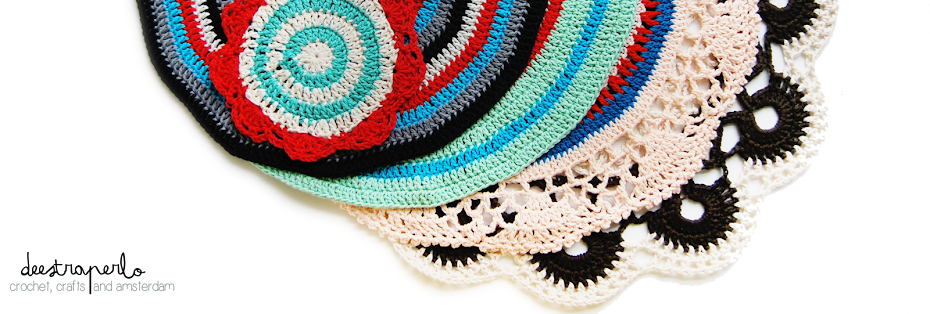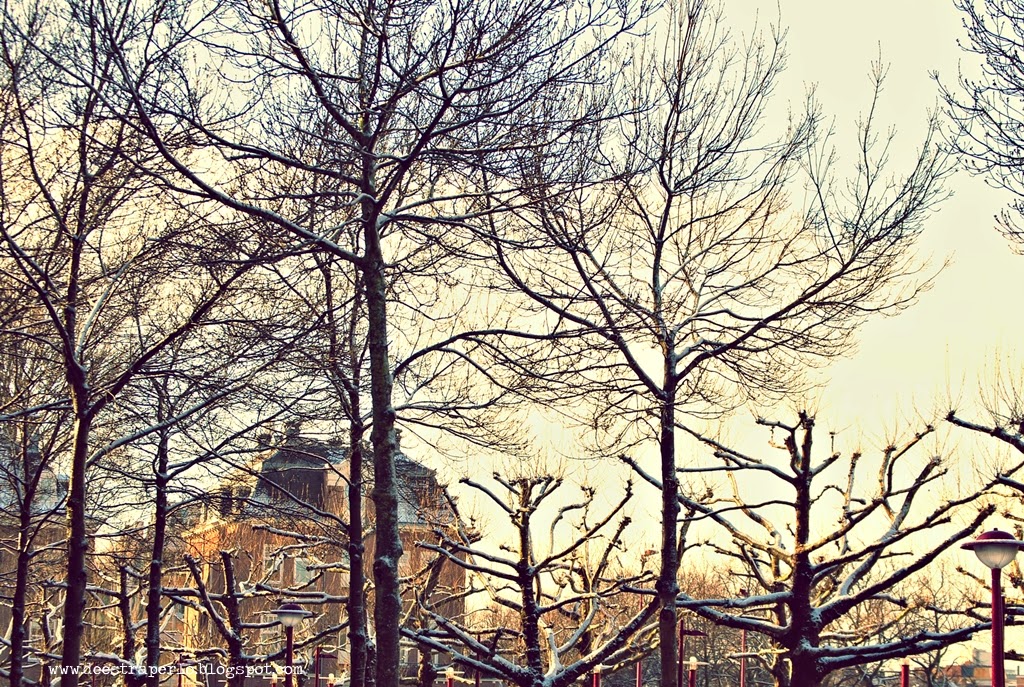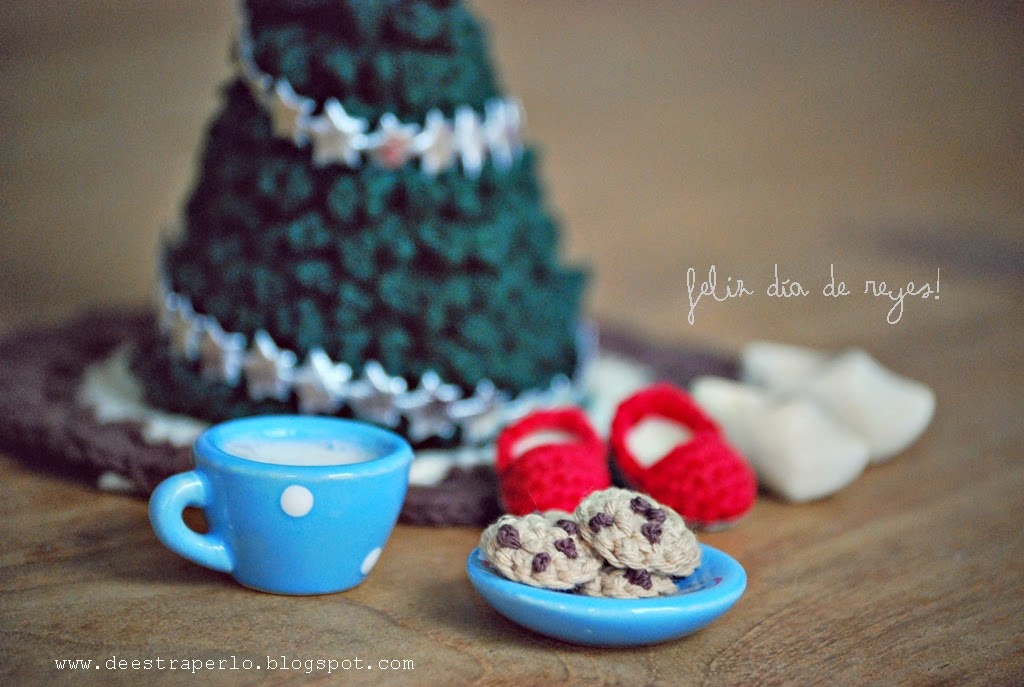Two different ways to crochet sc triangles
A few months ago we saw how to crochet double crochet triangles to make a crochet garland for your birthday, do you remember? Today we're going to learn how to crochet sc triangles, both from the top and from the base. If you're planning to make a square shaped project, like a pillow or a blanket, you would need an extra piece to get the square shape, a half-triangle, so we're also going to learn how to crochet it.
Hace unos meses os enseñé a
tejer unos triángulos de punto alto y con ellos hicimos unas
banderolas para decorar tu fiesta de cumpleaños, recuerdas? Hoy vamos a ver
cómo hacer triángulos en punto bajo, y además de dos formas distintas, empezando por la base y empezando por la punta. Además, si quieres tejer un proyecto de triángulos y que este quede de una forma cuadrada o rectangular, necesitarás un medio triángulo para cuadrar, así que vamos a verlo también.
How to crochet a sc triangle from the base: crochet a chain as long as you want the triangle to be (if you're going to use the half-triangle you'd better crochet an even number of sc). For example, chain 19, and crochet 18 pb.
From now on we'll work every round as follows: chain 1, skip the first sc, sc in second sc, (see picture below), sc in every sc till the end of the round. (We're decreasing 1 sc in every round.)
Para tejer un triángulo de punto bajo empezando por la base, tejemos una cadeneta tan larga como queramos de grande el triángulo. (Os recomiendo un número par de puntos bajos si luego queréis formar cuadrados o rectángulos usando el medio triángulo). En este caso vamos a hacer, por ejemplo, 18 puntos bajos, por lo tanto tejemos 19 cadenetas. A continuación tejemos una fila de punto bajo (18 pb).
A partir de ahora tejeremos cada fila de la siguiente forma: Primero haremos una cadeneta, como siempre que empezamos una fila de puntos bajos. A continuación nos saltaremos el primer pb donde tejeríamos normalmente, y nos vamos directamente al segundo (en la foto de abajo lo veréis señalado con una flecha) De esta forma estamos disminuyendo un pb en cada fila.
Keep crocheting this way, decreasing a sc per round until there's only 1 sc left and your triangle is finished!
Seguimos tejiendo con este sistema, disminuyendo un pb por fila, hasta que nos quede un sólo pb, y nuestro triángulo estará terminado!
How to crochet a sc triangle from the top: chain 2, crochet 2 sc in the second chain from the hook, as you see in the picture below. From now on we'll work every round as follows: chain 1, 2 sc in first sc, 1 sc in each sc. We're increasing 1 sc in every round.
Para tejer un triángulo de punto bajo empezando por la punta, tejemos dos cadenetas y dos pb en la segunda cadeneta desde el gancho, como veis en la foto de abajo. A partir de ahora tejeremos cada fila de la siguiente forma: Primero haremos una cadeneta, como siempre que empezamos una fila de puntos bajos. A continuación en el primer pb tejeremos 2 pb, y seguiremos la fila normalmente, tejiendo un pb en cada pb. De esta forma estaremos aumentando 1 pb por cada fila.
Once you've reached the desired length (18 sc in our example) stop crocheting and You're done! As in the other way to crochet a triangle, you'd better choose an even number if you're going to use half-triangles in your project.
Cuando llegues a un tamaño de triángulo que te guste (en nuestro ejemplo a 18 pb) paras y punto! Como en el sistema anterior, te recomiendo que el número de pb sea par en el caso de que quieras hacer un proyecto de forma cuadrada o rectangular usando medios triángulos.
HOW TO CROCHET HALF TRIANGLE
To crochet the half-triangle follow the same technique than crocheting the whole triangle but increasing or decreasing only in alternate rounds, in every other one. This would made one of the sides stay straight while the other will keep increasing or decreasing, depending if we're starting from the top or the base.
CÓMO TEJER MEDIO TRIÁNGULO
El procedimiento es el mismo que para el triángulo, sólo que en vez de hacer el aumento o la disminución en cada fila lo haremos en filas alternas, una sí una no. Eso hará que uno de los lados siempre esté igual y quede recto, mientras que el otro irá aumentando o disminuyendo según el sistema que empleemos.
Starting from the base, you will crochet half the pb than for the whole triangle (9 in this example). Also, like in the whole triangle, keep crocheting until there's only 1 sc left. From the top we'll do the same, we'll increase in alternate rounds, every other one, since you reach the half pb than in the whole triangle (9 in this case).
Para hacerlo empezando desde la base tejeremos la mitad de pb que en nuestro triángulo completo (en nuestro ejemplo serían 9). También al igual que con el triángulo, seguiremos tejiendo hasta que sólo nos quede un punto. Y desde la punta haremos lo mismo, aumentaremos una fila si una no hasta que lleguemos a la mitad de pb que en la base de nuestro triángulo (en nuestro ejemplo 9 pb).
Los triángulos dan mucho juego y son muy decorativos. Alterna triángulos de varios colores y conseguirás efectos preciosos. Anímate a tejerlos, que es muy fácil!
Triangles offer you a lot of possibilities, try combining different colors!





















































